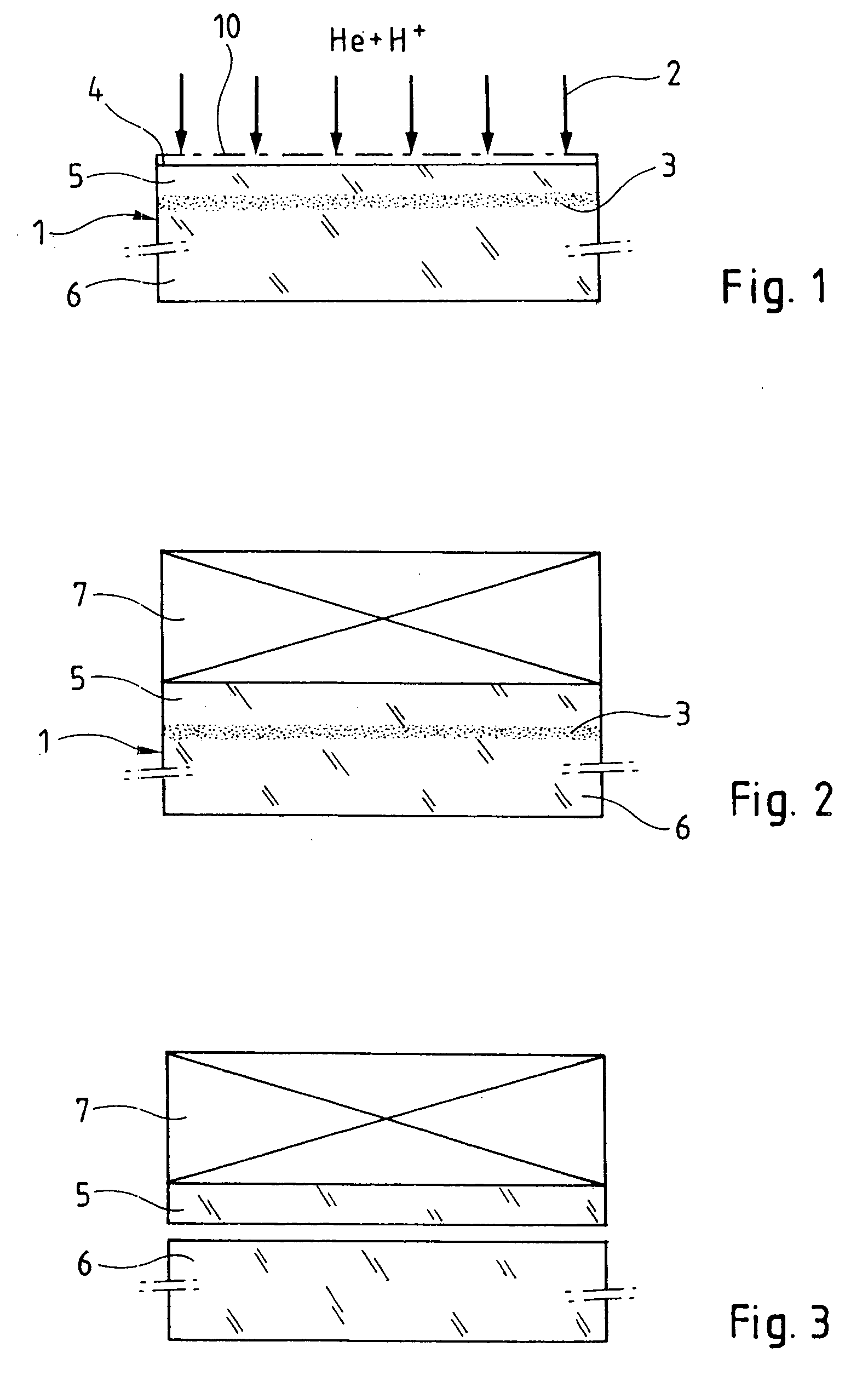Method of detaching a thin film at moderate temperature after co-implantation
a technology of co-implantation and detachable films, which is applied in the direction of basic electric elements, semiconductor/solid-state device manufacturing, electric devices, etc., can solve the problems of affecting the crystalline quality of materials,
- Summary
- Abstract
- Description
- Claims
- Application Information
AI Technical Summary
Benefits of technology
Problems solved by technology
Method used
Image
Examples
examples
[0064] According to a first embodiment of the invention, a substrate of Si (.about.700 .mu.m) comprising a layer of thermal SiO.sub.2 on the surface (for example 200 nm) may be implanted initially with hydrogen atoms under implantation conditions of 30 keV-4.5.times.10.sup.16 H / cm.sup.2 and then be implanted with helium under the conditions of 45 keV-2.times.10.sup.16 He / cm.sup.2. This source substrate may next be joined to a target substrate of fused silica (.about.1000 .mu.m) by direct bonding. The difference that exists between the coefficients of thermal expansion of these two materials (2.56.times.10.sup.-6 / .degree.C. for silicon and
[0065] 0.5.times.10.sup.-6 / .degree.C. for fused silica, at ambient temperature) makes it necessary to perform a heat-treatment for detachment at low temperature, typically being around 250-300.degree. C. A heat-treatment around 275.degree. C. next induces the growth of the cavities localized at the peak hydrogen level, the helium atoms participating...
PUM
 Login to View More
Login to View More Abstract
Description
Claims
Application Information
 Login to View More
Login to View More - R&D
- Intellectual Property
- Life Sciences
- Materials
- Tech Scout
- Unparalleled Data Quality
- Higher Quality Content
- 60% Fewer Hallucinations
Browse by: Latest US Patents, China's latest patents, Technical Efficacy Thesaurus, Application Domain, Technology Topic, Popular Technical Reports.
© 2025 PatSnap. All rights reserved.Legal|Privacy policy|Modern Slavery Act Transparency Statement|Sitemap|About US| Contact US: help@patsnap.com


